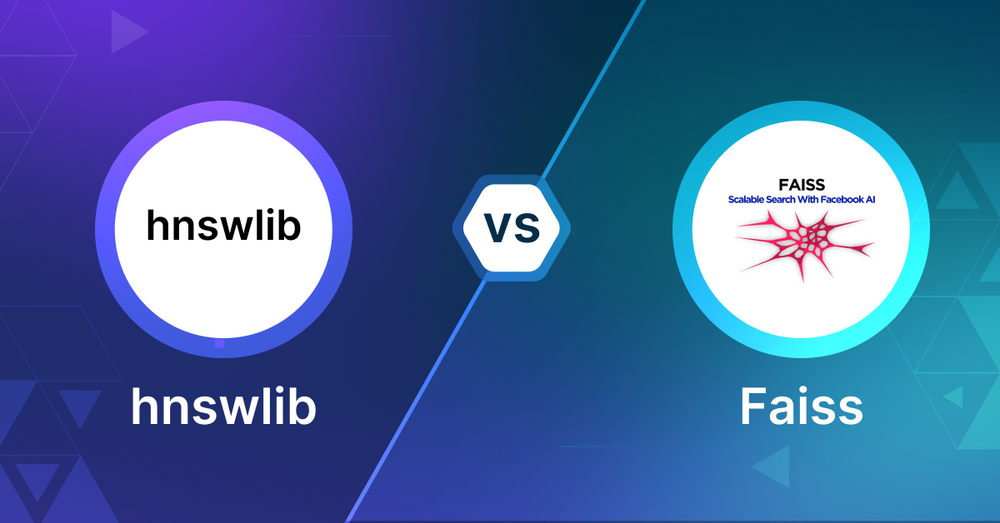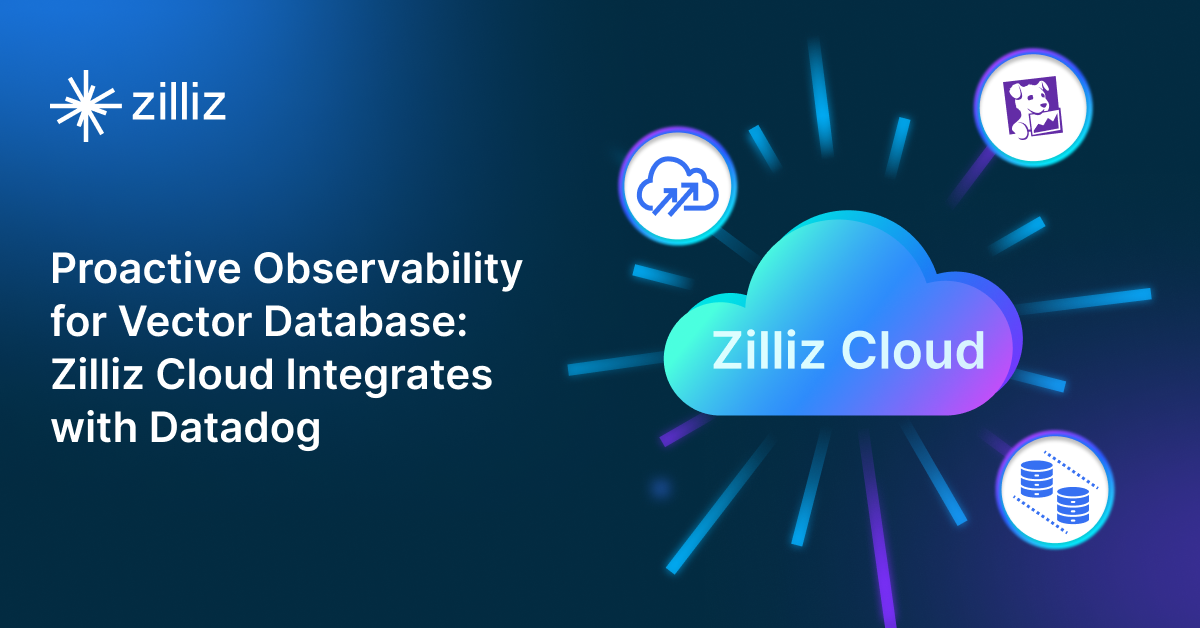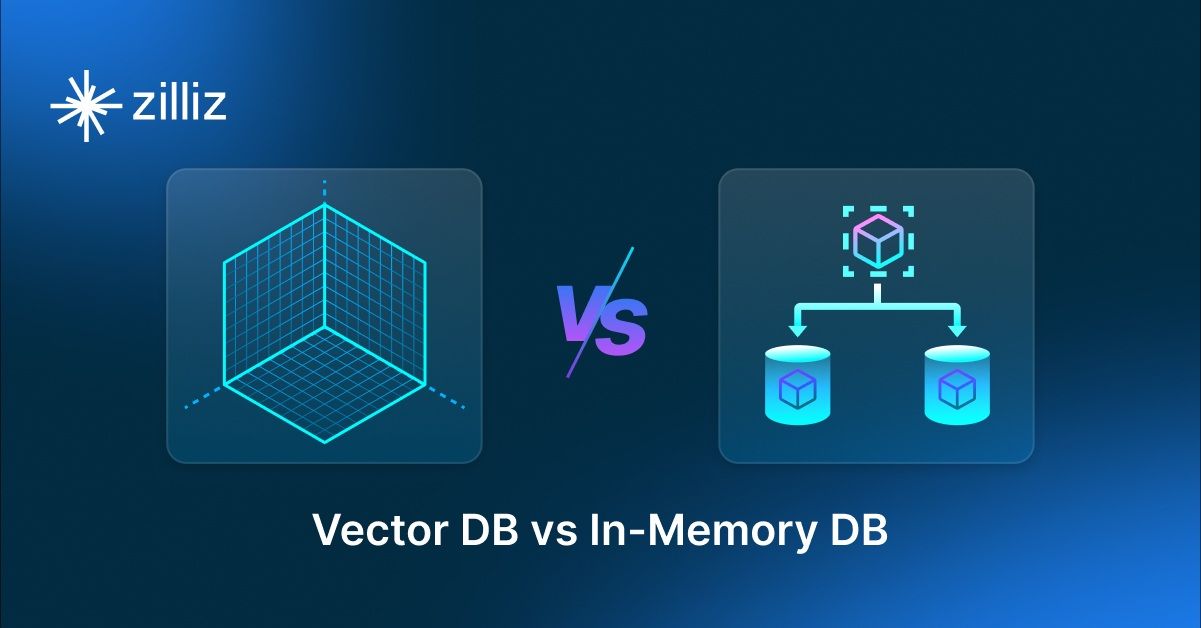Faiss vs. HNSWlib: Choosing the Right Vector Search Tool for Your Application

Introduction
As AI and machine learning applications continue to grow, so does the need for efficient vector search tools. These tools are critical for handling large-scale datasets, such as those used in recommendation systems, image retrieval, and similarity searches. They are also essential for handling high-dimensional data in various applications. Among the many options available, Faiss and HNSWlib are two leading vector search libraries, each designed with specific strengths in mind.
In this article, we’ll compare Faiss and HNSWlib, explore their features, and help you decide which is the better fit for your project.
Before diving into the specifics of Faiss vs HNSWlib, it’s essential to understand vector search. Simply put, Vector search, or vector similarity search, finds the closest vectors (data points) in a high-dimensional space to a given query vector. These vectors are often generated by machine learning models to capture the essence of the unstructured data (e.g., the meaning of a sentence or the features of an image).
Unlike traditional databases, where searches are based on exact matches or filtering, vector search focuses on similarity. The goal is to find vectors that are “close” to each other based on a distance metric (such as Euclidean distance or cosine similarity). For instance, vectors can represent words or sentences in natural language processing (NLP), and vector search helps find the most semantically similar words or texts. In recommendation systems, vector search identifies items closest to a user’s preferences. Vector searches also play a crucial part in retrieval augmented generation** (RAG)**, a technique that augments the output of large language models (LLMs))) by providing them with extra contextual information.
There are many solutions available on the market for performing vector searches, including:
- Vector search libraries such as Faiss and HNSWlib.
- Purpose-built vector databases such as Milvus, Zilliz Cloud (fully managed Milvus)
- Lightweight vector databases such as Chroma and Milvus Lite.
- Traditional databases with vector search add-ons
Faiss (Facebook AI Similarity Search) is an open-source library developed by Facebook AI Research (FAIR). It is designed to perform efficient similarity search and clustering of dense vectors. Faiss is particularly optimized for large-scale applications, capable of efficiently handling millions to billions of vectors, making it a popular choice in machine learning and data science workflows.
Introduction to Vector Search
Vector search is a powerful technique used to find the closest vectors (data points) in a high-dimensional space to a given query vector. This method is essential in various data-driven fields, including data science, natural language processing (NLP), search engines, and recommender systems. By leveraging vector search, we can identify the most relevant documents or items related to a given query, enhancing the accuracy and efficiency of information retrieval.
In practical applications, vector search is used to match user queries with the most relevant results. For instance, in NLP, vector search helps find semantically similar words or texts, improving the performance of language models. In recommendation systems, it identifies items that closely match a user’s preferences, providing personalized suggestions. The ability to perform efficient vector search is crucial for handling large-scale datasets and delivering quick, accurate results.
Faiss Core Features and Strengths
Faiss excels in managing large datasets by leveraging various algorithms to balance speed and accuracy. One of its core strengths is that it provides both exact and approximate nearest neighbor (ANN) search options. This flexibility allows users to choose between high accuracy or improved speed, depending on their use case.
Another key feature of Faiss is its GPU support, which can significantly speed up the search process by offloading computations to GPUs. This makes it ideal for applications requiring low-latency search across large datasets.
Faiss also offers several indexing strategies, such as IVF (Inverted File Index) and PQ (Product Quantization), which help optimize memory usage and search efficiency. In the IVF indexing strategy, the 'search scope' is determined by parameters like nprobe, which influence the breadth of the search through Voronoi cells. These techniques are especially useful when scaling to billions of vectors, as they reduce memory footprints and search time.
How Faiss Handles Vector Search
Faiss allows users to index their vectors using different methods, depending on their performance and accuracy requirements. Faiss's indexing methods, such as IVF, can be structured with multiple layers to enhance search efficiency. It provides an approximate search through techniques like IVF and PQ, where the dataset is divided into clusters, and searches are performed only within relevant clusters. For applications where an exact search is required, Faiss can also perform a brute-force search over the entire dataset. This flexibility in search methodologies makes it suitable for various use cases.
What is HNSWlib? An Overview
HNSWlib (Hierarchical Navigable Small World) is an open-source library designed for fast approximate nearest neighbor search (ANN). It is based on the Small World Graphs algorithm and is known for its high efficiency in performing vector searches. HNSWlib is widely regarded for its balance between speed and memory usage, making it a strong contender for large-scale vector search tasks.
HNSWlib Core Features and Strengths: Hierarchical Navigable Small World
One of the main strengths of HNSWlib is its graph-based approach to vector search. This method creates a graph where each node is connected to its nearest neighbors, forming a navigable structure. The HNSW index is a powerful and efficient structure for performing similarity searches, balancing search quality and speed while addressing memory usage concerns. Queries traverse this graph by jumping between nodes, dramatically reducing the number of comparisons needed to find approximate nearest neighbors. This allows HNSWlib to maintain high-speed searches even as the dataset size grows.
HNSWlib is highly optimized for in-memory performance, meaning that all operations are performed in RAM, contributing to its speed. However, this also means that it requires sufficient memory to handle large datasets effectively. Unlike Faiss, HNSWlib doesn’t have built-in support for GPUs, but it is still incredibly fast on CPU due to its efficient graph-based search.
HNSWlib’s vector search is based on the Hierarchical Navigable Small World Graphs algorithm. When a query is made, the algorithm traverses the graph to find nodes (vectors) that are close to the query vector. The graph structure helps minimize the number of comparisons needed, making searches highly efficient. This approach is particularly well-suited for tasks where high search speed is critical, even if the dataset grows large.
Key Differences Between Faiss and HNSWlib
Though both Faiss and HNSWlib are designed to perform efficient vector search, they differ in key areas like search methodology, data handling, scalability, and performance. Faiss handles high-dimensional data with various search methods, while HNSWlib's performance can degrade with high-dimensional data due to its graph-based approach. Let’s break down the major differences between these two tools.
Faiss offers multiple ways to perform searches, ranging from exact brute-force methods to approximate searches using product quantization or inverted file indices. This variety allows Faiss to be used in applications where both speed and accuracy can be adjusted according to specific needs
HNSWlib, on the other hand, uses a graph-based algorithm. By constructing a navigable graph, HNSWlib enables highly efficient approximate searches. Its search method relies on traversing this graph rather than performing comparisons between every vector, which allows it to reduce search times significantly.
While both libraries focus on fast, approximate searches, Faiss provides more flexibility in conducting searches. HNSWlib, however, is built specifically for approximate searches and excels at that.
Data Handling
Faiss is designed to handle large datasets and efficiently works with vectors stored on both CPU and GPU. It can handle billions of vectors by using quantization techniques that reduce memory usage without sacrificing too much accuracy. Faiss is an excellent choice for large-scale applications where memory efficiency is important.
HNSWlib, in contrast, is designed for in-memory operations. This means that the entire dataset must be loaded into RAM, which can limit its scalability to smaller systems with limited memory. However, this approach also contributes to its high speed, as it doesn’t rely on disk access during searches. The HNSW index is optimized for in-memory operations, further enhancing HNSWlib's performance by balancing search quality and speed while addressing memory usage concerns.
Indexing Methods and Data Handling
Indexing methods play a vital role in storing and retrieving vector data efficiently. Several indexing methods are available, each with its strengths and weaknesses. For example, Flat indexes offer perfect search quality but can be slow, making them suitable for smaller datasets where accuracy is paramount. In contrast, HNSW (Hierarchical Navigable Small World) indexes are designed for larger datasets with higher dimensionality, providing a balance between speed and accuracy.
Other popular indexing methods include LSH (Locality-Sensitive Hashing) and IVF (Inverted File Index). LSH is effective for grouping similar vectors into buckets, which speeds up the search process but may compromise on precision. IVF, on the other hand, divides the dataset into clusters and performs searches within relevant clusters, optimizing memory usage and search efficiency. Choosing the right indexing method depends on the specific requirements of your application, such as the size of the dataset and the desired search quality.
Scalability and Performance
Faiss is known for its scalability. It can handle datasets with billions of vectors, especially when using GPU acceleration. Faiss’s various indexing techniques, such as IVF and PQ, allow it to scale effectively by trading off between memory usage and search speed. If you need to scale across massive datasets and want to leverage GPUs, Faiss is a strong option.
HNSWlib is incredibly fast on smaller to mid-sized datasets but is limited by the amount of available memory, as it performs all searches in RAM. This makes it less suitable for datasets that are too large to fit in memory. However, for datasets that do fit, HNSWlib’s graph-based approach ensures quick search times, often outperforming Faiss in pure CPU-based searches on moderately sized datasets. HNSWlib's graph-based approach uses multiple layers to enhance search efficiency and performance, structuring data in a way that reduces connections as one moves through the layers.
Flexibility and Customization
Faiss provides a range of customization options, from choosing indexing methods to adjusting accuracy vs. speed trade-offs. Faiss allows customization of the 'search scope' through parameters like nprobe, affecting search precision and speed. Developers can decide whether to prioritize memory efficiency or search precision, making Faiss adaptable to various scenarios. This flexibility is especially useful in projects where the requirements for vector search can change over time.
Sometimes, it is simpler to use HNSWlib, which offers fewer customization options than Faiss, but its default settings work exceptionally well for approximate nearest-neighbor searches. It doesn’t require much tuning to get optimal performance, which makes it simpler to use in some cases. However, the trade-off is that HNSWlib lacks Faiss’ flexibility when it comes to customizing search behavior.
Integration and Ecosystem
Faiss has a broader ecosystem, particularly regarding integration with machine learning frameworks. Its GPU support and ability to integrate into Python-based workflows make it a favorite among data scientists and engineers working with deep learning models.
HNSWlib is primarily a standalone library, and while it integrates well with Python, it doesn't have the same level of ecosystem integration as Faiss. That being said, it's widely used in applications where high-speed vector search is needed without the overhead of integrating with a broader framework.
Both Faiss and HNSWlib are relatively easy to set up, but HNSWlib has the edge in terms of simplicity. Its graph-based algorithm works efficiently with minimal configuration, making it a good choice for developers who want a fast, easy-to-use solution.
Faiss, on the other hand, has a steeper learning curve. Because it offers so many indexing options and customization settings, getting the most out of Faiss requires a deeper understanding of its features. However, this complexity also gives Faiss more versatility.
Cost Considerations
Faiss can leverage GPUs to speed up searches, which may increase hardware costs depending on your infrastructure. Additionally, Faiss's flexible indexing methods allow you to choose configurations that either reduce memory usage or speed up searches, affecting cost based on how much memory or compute power is needed.
HNSWlib operates entirely in memory, so your costs will largely depend on the amount of RAM available. If your dataset can fit in memory, HNSWlib is extremely efficient. However, for very large datasets, the cost of scaling up memory could become a limiting factor.
Security Features
Neither Faiss nor HNSWlib offers built-in security features like encryption or access control. These are libraries designed for search performance, so any security requirements must be handled separately, typically at the application or infrastructure level.
When to Choose Faiss
Faiss is a great choice if you're working with very large datasets and need the flexibility to balance between speed and accuracy. It's particularly well-suited for projects requiring GPU acceleration to reduce search latency. Faiss's versatility makes it a strong option for a wide range of machine-learning applications, especially when memory efficiency is a key concern.
If your project involves large-scale search tasks like image retrieval, document classification, or recommendation systems, and you need to scale efficiently across billions of vectors, Faiss is the better choice.
When to Choose HNSWlib
HNSWlib excels when search speed is the primary concern, and your dataset can fit into memory. Its graph-based algorithm allows it to perform extremely fast searches without needing much customization or tuning. For developers who want a simple, high-performance tool for approximate nearest neighbor search, HNSWlib offers a straightforward solution.
HNSWlib is ideal for use cases like real-time search applications, small to mid-sized datasets, and scenarios where low-latency search is critical but GPU acceleration is not necessary.
Approximate Nearest Neighbor (ANN) Algorithms
Approximate Nearest Neighbor (ANN) algorithms are designed to find the closest vectors to a given query vector in a high-dimensional space quickly. While exact search algorithms guarantee perfect accuracy, they can be slow and computationally expensive, especially for large datasets. ANN algorithms offer a faster alternative by sacrificing a small amount of accuracy for significant gains in speed.
Several ANN algorithms are widely used, including Faiss, HNSWlib, and Annoy. Faiss, developed by Facebook AI Research, provides both exact and approximate search options, making it versatile for various use cases. HNSWlib, based on the Hierarchical Navigable Small World graph, excels in high-speed searches by navigating through a graph structure. Annoy, developed by Spotify, is optimized for memory efficiency and is particularly useful for recommendation systems.
These algorithms are crucial for applications where quick response times are essential, such as real-time search and recommendation systems. By understanding the trade-offs between speed and accuracy, developers can choose the most suitable ANN algorithm for their specific needs, ensuring efficient and effective vector similarity search.
Comparing Vector Search Libraries and Purpose-built Vector Databases
Both vector search libraries like Faiss and HNSWlib and purpose-built vector databases like Milvus aim to solve the similarity search problem for high-dimensional vector data, but they serve different roles. These tools are designed to handle high-dimensional data efficiently, addressing the performance limitations that arise in such scenarios.
Vector search libraries focus solely on the task of efficient nearest neighbor search. They offer lightweight, fast solutions for finding vectors similar to a query vector. They are often used in smaller, single-node environments or for applications with static or moderately sized datasets. However, they generally lack features for managing dynamic data, providing persistence, or scaling across distributed systems. Developers using these libraries typically need to manually handle data management, updates, and scaling.
On the other hand, purpose-built vector databases like Milvus and Zilliz Cloud (the managed Milvus) are comprehensive systems designed for large-scale vector data management. These databases go beyond simple vector search, offering features like persistent storage, real-time updates, distributed architecture, and advanced querying capabilities. They support dynamic datasets and can easily handle real-time applications where data is frequently updated. Additionally, vector databases often include integrated support for combining vector searches with traditional filtering and metadata queries, making them ideal for production environments requiring scalability, high availability, and more complex search functionalities.
- Check out the latest new features and enhancements of Zilliz Cloud: Zilliz Cloud Update: Migration Services, Fivetran Connectors, Multi-replicas, and More
When to Choose Each Vector Search Solution
Choose Vector Search Libraries if:
- You have a small to medium-sized, relatively static dataset.
- You prefer full control over indexing and search algorithms.
- You're embedding search in an existing system and can manage the infrastructure.
Choose Purpose-Built Vector Databases if:
- You need to scale to billions of vectors across distributed systems.
- Your dataset changes frequently, requiring real-time updates.
- You prefer managed solutions that handle storage, scaling, and query optimizations for you.
In summary, vector search libraries are best suited for simpler, smaller-scale use cases where speed and memory efficiency are priorities, but operational complexity is minimal. Purpose-built vector databases, by contrast, are designed for large-scale, production-grade systems that demand dynamic data handling, scalability, and ease of use, often providing significant operational benefits for developers managing complex applications.
Evaluating and Comparing Different Vector Search Solutions
OK, now we've learned the difference between different vector search solutions. The following questions are: how do you ensure your search algorithm returns accurate results and does so at lightning speed? How do you evaluate the effectiveness of different ANN algorithms, especially at scale?
To answer these questions, we need a benchmarking tool. Many such tools are available, and two emerge as the most efficient: ANN benchmarks and VectorDBBench.
ANN benchmarks
ANN Benchmarks (Approximate Nearest Neighbor Benchmarks) is an open-source project designed to evaluate and compare the performance of various approximate nearest neighbor (ANN) algorithms. It provides a standardized framework for benchmarking different algorithms on tasks such as high-dimensional vector search, allowing developers and researchers to measure metrics like search speed, accuracy, and memory usage across various datasets. By using ANN-Benchmarks, you can assess the trade-offs between speed and precision for algorithms like those found in libraries such as Faiss, Annoy, HNSWlib, and others, making it a valuable tool for understanding which algorithms perform best for specific applications.
ANN Benchmarks GitHub repository: https://github.com/erikbern/ann-benchmarks
ANN Benchmarks Website: https://ann-benchmarks.com/
VectorDBBench
VectorDBBench is an open-source benchmarking tool designed for users who require high-performance data storage and retrieval systems, particularly vector databases. This tool allows users to test and compare the performance of different vector database systems such as Milvus and Zilliz Cloud (the managed Milvus) using their own datasets, and determine the most suitable one for their use cases. VectorDBBench is written in Python and licensed under the MIT open-source license, meaning anyone can freely use, modify, and distribute it.
VectorDBBench GitHub repository: https://github.com/zilliztech/VectorDBBench
Take a quick look at the performance of mainstream vector databases on the VectorDBBench Leaderboard.
Techniques & Insights on VectorDB Evaluation:
Conclusion
In conclusion, vector search is a fundamental task in various data-driven fields, enabling the efficient retrieval of relevant information. Indexing methods and ANN algorithms are essential tools for storing and retrieving vector data effectively. Techniques like LSH and HNSW help group vectors into buckets and navigate through high-dimensional spaces, optimizing the search process.
By understanding the different indexing methods and ANN algorithms, developers can select the right techniques for their use cases, improving the efficiency and accuracy of their vector search applications. Whether you need to handle large-scale datasets or require real-time search capabilities, the right combination of indexing and ANN algorithms can significantly enhance your application’s performance.
Further Resources about VectorDB, GenAI, and ML
- Introduction
- Introduction to Vector Search
- What is HNSWlib? An Overview
- Key Differences Between Faiss and HNSWlib
- When to Choose Faiss
- When to Choose HNSWlib
- Approximate Nearest Neighbor (ANN) Algorithms
- Comparing Vector Search Libraries and Purpose-built Vector Databases
- Evaluating and Comparing Different Vector Search Solutions
- Conclusion
- Further Resources about VectorDB, GenAI, and ML
Content
Start Free, Scale Easily
Try the fully-managed vector database built for your GenAI applications.
Try Zilliz Cloud for FreeKeep Reading

Announcing the General Availability of Zilliz Cloud BYOC on Google Cloud Platform
Zilliz Cloud BYOC on GCP offers enterprise vector search with full data sovereignty and seamless integration.

Proactive Monitoring for Vector Database: Zilliz Cloud Integrates with Datadog
we're excited to announce Zilliz Cloud's integration with Datadog, enabling comprehensive monitoring and observability for your vector database deployments with your favorite monitoring tool.

Vector Databases vs. In-Memory Databases
Use a vector database for AI-powered similarity search; use an in-memory database for ultra-low latency and high-throughput data access.
The Definitive Guide to Choosing a Vector Database
Overwhelmed by all the options? Learn key features to look for & how to evaluate with your own data. Choose with confidence.